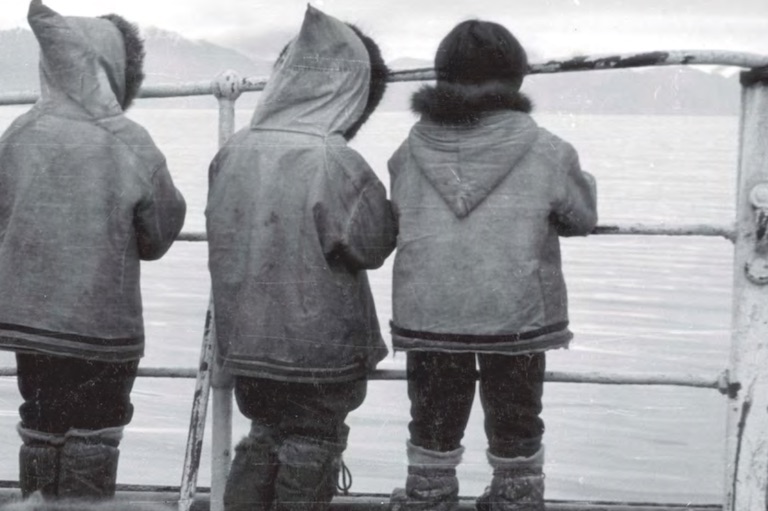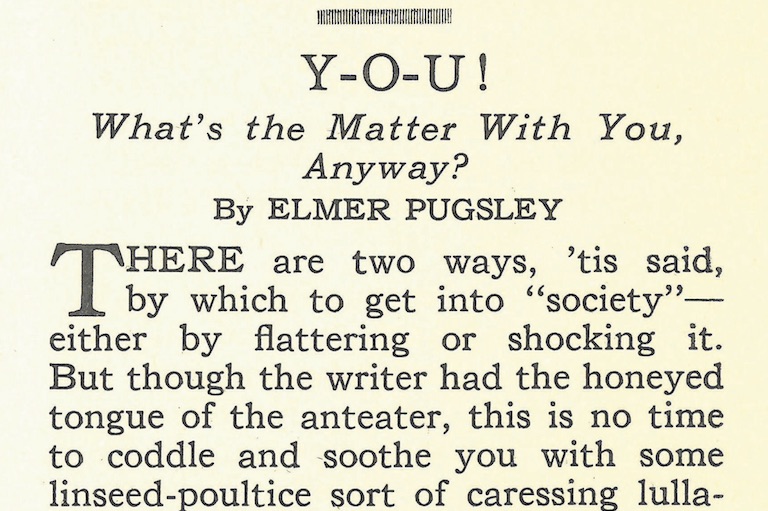Northern Exposures

The iconic Canadian photographer Yousuf Karsh was once asked the secret to great photography. “Look and think before opening the shutter,” he replied. “The heart and mind are the true lens of the camera.”
The photographs created for The Beaver magazine that make up the Hudson’s Bay House Library collection at the Hudson’s Bay Company Archives in Winnipeg speak volumes about the hearts and minds of the people who made them. They included professional photographers at the top of their game and others who were just starting out. Some had lives tragically cut short. Others were HBC employees captivated by the people and places they saw.
The collection includes approximately fifty thousand prints, negatives, and transparencies. Most were created in the 1900s, but some date as far back as the 1860s.
The Beaver regularly hired top Canadian and international photographers, including Richard Harrington, best known for his 1950s photos of Inuit communities ravaged by famine, Margaret Bourke-White, the first female American war photographer, as well as Fred Bruemmer, Rosemary Gilliat, Max Sauer, Charles Gimpel, and others.
Advertisement

Two young photographers stand out due to their tragic deaths. Richard N. Hourde of London, Ontario, took up photography at the age of nineteen. Inspired by the book Go North Young Man!, by Courtney Ryley Cooper, Hourde set off to portray remote regions of Canada.
In June 1936, The Beaver offered him $125 per month to photograph Inuit scenes in the Arctic, salmon-fishing scenes in Labrador, and mountain-trail-riding scenes in British Columbia.
Unfortunately, Hourde contracted pneumonia while on assignment in northern Ontario and died on March 3, 1937, at the age of twenty-one. The Beaver editor Douglas MacKay sent Hourde’s mother a handwritten note of condolence. “We all here had become genuinely attached to your son,” MacKay wrote. “His pictures ... will be reminders to us of his own merits.”
Tragedy also befell American photographer Lorene Squire. She worked three commissions for The Beaver in the 1930s, photographing everything from birds and beavers to Inuit communities. During one of her assignments, she photographed the wedding of an HBC employee and his bride in Arctic Bay, in what’s now Nunavut.
Sadly, Squire died in a car accident in August 1942 while on assignment for Life magazine.

Among HBC employees, J.W. Anderson and Richard Phillips were two of the most prolific photographers. Anderson, a fur trader between 1910 and 1958, rose through the ranks to chief factor and district manager for the James Bay and Eastern Arctic districts.
The HBC Archives holds more than eight thousand of his photos. Phillips, the personnel supertintendent of the Fur Trade Department, inspected more than one hundred HBC posts across Western Canada. The archives holds more than 1,600 of his photos. They depict the everyday lives of outpost staff as well as Indigenous peoples who lived near them.
Another notable amateur photographer was Lorenz Alexander Learmonth. Born in Orkney, Scotland, Learmonth was a veteran of the First World War. He joined the HBC in 1919 as a post manager at Port Harrison (now Inukjuak), Quebec, and served at posts across the North for nearly three decades. Learmonth, who retired from the HBC in 1957, spent his free time hunting for relics of the doomed 1845 Franklin expedition to find the Northwest Passage.
With 7 uniquely curated newsletters to choose from, we have something for everyone.
BY THE NUMBERS
Archiving The Beaver

Housed in the Archives of Manitoba in Winnipeg, the Hudson’s Bay Company Archives (HBCA) includes the archival records of the HBC. This collection includes tens-of-thousands of records related to The Beaver magazine, such as articles, photographs, books, maps, and correspondence compiled since the magazine was founded back in 1920.
50,000
Approximate number of photographs related to The Beaver held by the HBCA, including prints, negatives, and transparencies.
182
Total length in metres of textual records related to The Beaver held by the HBCA, including manuscripts, maps, office files, and other correspondence.
2
Number of institutions that have overseen the collected records related to The Beaver. The collection was managed by the editor of The Beaver after 1920 but switched to being overseen by the HBCA in 1987.
1,644
Number of photographs of Western Canadian HBC posts taken by former HBC employee Richard Phillips between 1930 and 1974.
500
Approximate number of pieces of artwork related to The Beaver and housed by the HBCA, including pencil sketches, pastels, and pen-and-ink drawings.
We hope you’ll help us continue to share fascinating stories about Canada’s past by making a donation to Canada’s History Society today.
We highlight our nation’s diverse past by telling stories that illuminate the people, places, and events that unite us as Canadians, and by making those stories accessible to everyone through our free online content.
We are a registered charity that depends on contributions from readers like you to share inspiring and informative stories with students and citizens of all ages — award-winning stories written by Canada’s top historians, authors, journalists, and history enthusiasts.
Any amount helps, or better yet, start a monthly donation today. Your support makes all the difference. Thank you!
Themes associated with this article
Advertisement
100 Years with The Beaver

The Editor's Circle was founded in 2020 to celebrate the 100th anniversary of Canada’s History-The Beaver magazine. Gifts from patrons and supporters of $500 or more will be recognized annually.

Canada’s History Archive, featuring The Beaver, is now available for your browsing and searching pleasure!
















